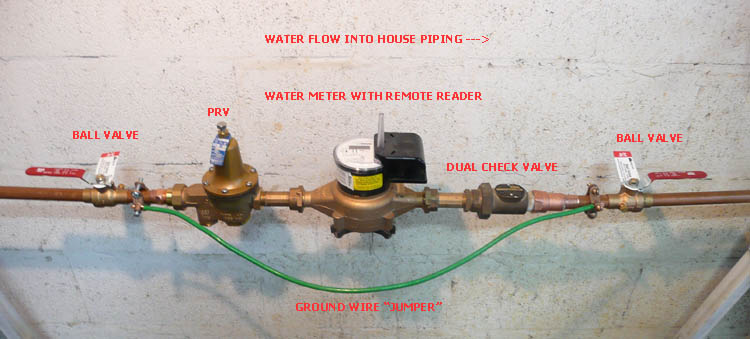Water comes into your home through a lateral and service line which is tapped into the water main in the street.
The lateral is the portion owned and maintained by the Authority and runs from the main to a curb valve at the property line.
The portion of the line which goes from the curb valve to the building wall is called the service line, and is owned and maintained by the homeowner.
As soon as the service piping comes through your basement wall, it goes through a piping assembly called the Meter Set, which includes several items which are important to provide service to the home, including:
Two (2) quarter-turn ball valves to turn the water on and off in the event of a leak in the house, or to allow the meter to be removed or
changed out for age (we change residential meters every 20 years).
A Dual Check Valve which allows water to come into the home, but prevents it from flowing back out into the water main. This device
is important and needs to be in place and operational to avoid possible public water contamination issues in the event of a loss of
pressure in the main. If your meter set does not seem to have one, you should contact your plumber as the check valve is required by
Local and State Plumbing Codes.
The Meter (owned and maintained by the Authority).
A Pressure Reducing Valve or PRV, which reduces the line pressure in the mains to a lower pressure, typically in the 50 psi range for
internal plumbing. These units last 15-20 years typically and should be adjusted or replaced as needed by your plumber. When they fail
they often reduce pressure at the faucet too much and act as a restriction.
A Copper Grounding Wire (Jumper) and clamps across the whole assembly to maintain house grounding across the meter set. This
needs to be in place for electrical safety.

Typical Residential Water Meter Set
